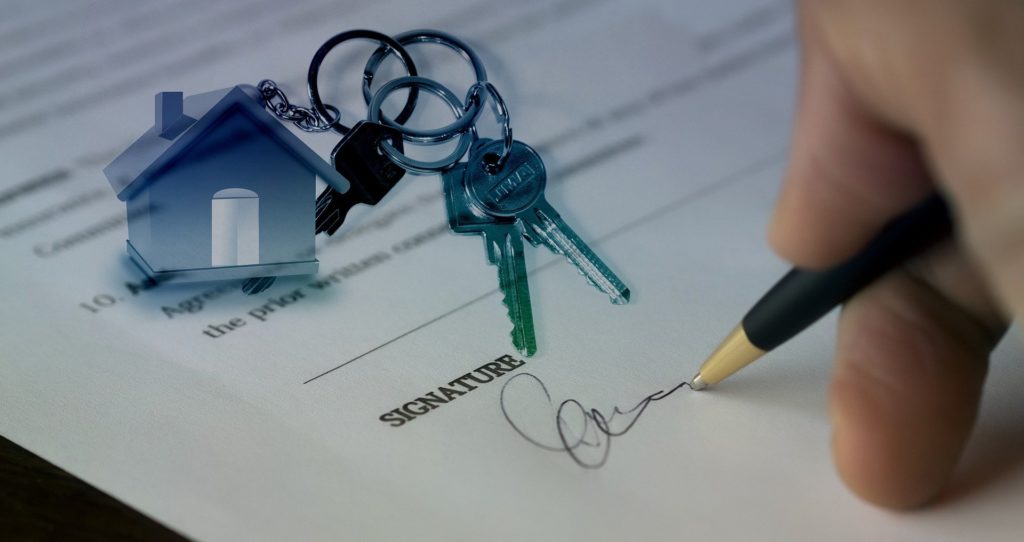Buying a home is an emotional process, but this home buyer guide can make sure you are starting off on the right foot. Shopping for a home is physically demanding and emotionally even more taxing.
You build up a house in your mind based off of what you see online only for it to be terrible in person (pictures can make a huge difference!), or you put in an offer to have someone else’s offer selected. Be prepared for being a home buyer with this article!
Our Experience Searching for Our Home
Home buying is on my mind, because we have just now been in our home in Kansas City longer than we lived in Los Angeles. I don’t know why that feels so odd, but it does.
We purchased our home almost exactly four years ago, and moved back to Kansas City shortly after. The process was hard. We lived halfway across the country while house shopping. One weekend when we were back in Kansas City, we decided to go walk through some houses to start thinking about what we wanted.
We went to a couple of neighborhoods that had open houses in their model homes. Honestly, they didn’t feel like home. They were too farmhouse style, which just isn’t my thing (no offense, I get the appeal… especially in Kansas City!). We drove through some neighborhoods and saw what they looked like. We then started watching online.
We planned to be home one weekend in the fall, so we hired a buyers agent and he lined up a number of houses for us to tour. None were great (one had been smoked in so heavily we didn’t even walk in the door) until the last one. We liked it, so we decided to put in an offer. Our plane ride home I decorated the entire house on a Pinterest board. I knew that was where we were going to raise our kids…
That was until our offer was passed over for another. So, we started looking again with our agent. The house we ended up buying was a house we only toured over FaceTime with our agent. We made a point to be here for the inspection. We are so glad that the first house didn’t end up being ours, because we like where we are at much better.
Mark owned a home before we met and this is my first. We have both learned a lot about home buying and home ownership. Here are eleven steps to ensuring your home buying experience works out in your favor!
11 Step Home Buyer Guide
1. Save a Down Payment and Get Pre-Approved
The first step to being home buyers is to be able to pay for the home you want to buy. If you have cash on hand to pay for the home outright, man you’re in a great spot! Congratulations. If you are like my husband and I, though, you are taking out a loan. In personal finance taking out a mortgage is deemed an ok debt (as long as you aren’t over extending yourself).
So, now that you are serious about finding a new home to own, you need to find a company willing to loan you the money. This is a task not to be taken lightly. The slightest difference in the interest percent can save or cost you a lot of money. MPower Co recommends that you at a minimum get mortgage rate quotes from at least five, yes five, different mortgage companies.
Start with where you bank and shop around, because the mortgage rates do vary from one company to another. Make sure to understand what type of mortgage you are taking out (conventional or otherwise). There are a number of different mortgage options, but that is another post for another day.
2. Determine How Much You are Willing to Spend
How much you are approved for is not synonymous with how much you are likely willing to pay for a home. When we were shopping for a home, we knew we were not willing to spend what we were pre-approved for. We wanted to have a lot of flexibility in our spending and not have more house than we needed.
My brother was recently pre-approved for a mortgage, and similarly, the amount he is pre-approved for is much higher than he is comfortable spending on a home.
In personal financial planning, the rule of thumb is not to spend more than 30% of take home pay on the mortgage and insurance; however, clearly the lower the amount the better. Being house poor is not a great financial decision, nor does it promote your best quality of life.
3. Location, Location, Location
Know where you want to be located. Just 15 minutes in one direction or another can directly impact your life. It affects what school district/school you’re located in (if that matters to you), it affects your commute, and it can affect the price of houses.
If you aren’t sure exactly where you want to be, spend time and make an effort to narrow down your ideal location area. It costs less to stay in an area or spend a day in an area than it does to sell a home and relocate.
Also, remember you drive to work every day (well, pre-pandemic), but likely only go to the grocery store once or twice a week.

4. Find a Home Buyers Agent
In a real estate transaction, typically 6% (very few agents will negotiate this rate) of the purchase price is going to be paid to real estate agents no matter what. You might as well be represented and have a professional looking out for your best interests.
Find someone that you trust, knows the real estate market you are shopping in (i.e. it would have made no sense for us to have a buyers agent located in Los Angeles), and understands what it is you are looking for. It is their job to advise you so that you make a smart home buying and financial decision. By knowing the homes in the area, they can provide sound information on appropriate pricing and look at the home with experience.
5. To Fix or Not to Fix
Know how much work you are willing to do to make a space your own. If you need turn-key, you may pay a little more upfront for it. If you are willing to fix up a place, know that there are likely going to be a lot more costs than you realize (I’m speaking from experience here!), and these costs will have to come out of your pocket.
We chose to purchase a house that had a great layout, but was terribly dated. The house was built in 1994, and few things had been done to update the inside. While our purchase price was much lower than some of the houses in the area with more contemporary updates, we have likely spent the difference in updating the home. You don’t realize how many light fixtures are in a place until you go around the house counting them.
So, think about your preference, what you enjoy, and what point of life you are in. Now, with two kids in the house the amount of tearing things apart we want to do is a lot less! If you are buying a dated home or are going to fix, make sure you have a large amount saved to fix and/or repair when things come up, because they will! (Check out our blog post on emergency funds, if you don’t have one!)
6. Be Open Minded but Practical
This past weekend I went house shopping with my brother. He loved one online, but when we walked through it we realized it was not a good fit. The ceilings were low, the remodeling was fine, but not fantastic (i.e. they painted 1950s cabinets, which really should have just been replaced).
I think back to when we looked for homes, I also saw one online that I thought I would love. When we got into the home the house literally shook with every step we took. Clearly there was a structural issue with the home. It was good to walk away.
Know what your must haves are (i.e. how many bedrooms you are looking for), but be reasonable. One home is likely not going to have everything exactly the way you want it. So, look at a reasonable amount of properties, in varying price ranges (below your prefered spending amount), so that you really have a good idea of what is reasonable.
7. Placing an Offer
Once you think you’ve found “the one,” it’s time to put in an offer. You’ll need to work closely with your buyers agent to decide what is a reasonable offer for the house. You’ll need to know what offer amount you would like to request, a closing date, and how much you are willing to put down as earnest money (think of this as a security deposit – except you lose it if you choose to walk away from buying the home, say after inspections).
If you know there are other offers on the table, make sure you feel like you are putting down your best offer, but don’t stretch yourself to the point that you are uncomfortable for any reason. You want to be able to sleep at night in the home if you do have the opportunity to purchase it!
8. Be Willing to Walk Away
Remember, this is just one house and there are many out there. Consider buying the home a five year commitment. If you don’t see yourself in the home, for any reason, for at least five years, it’s not the right property – walk away.
Also, think about your “walk away point.” If there are negotiations, there is some point at which you need to just walk away. There is a threshold where the house is no longer worth it – I call this the walk away point (i.e. the inspection comes back with a deal breaking issue, the seller asks you to pay above what you’re comfortable paying for the home, etc.).
Don’t jeopardize your financial well-being if someone else is being greedy or if the purchase doesn’t fit within your needs and budget any more. There will be a better situation.
Like I said earlier, our offer on a house was passed over for another. The sellers came back to both us and the other couple when we put in our offers, requesting that each give them their best and final offer. We didn’t change our original offer. We had put in our best offer the first time around. We didn’t “win” the house. It worked out, because we have a preference for our current home over that one for a number of reasons.
9. Adequate Inspections
Once you are under contract on a house, it’s time for inspections. Take time and spend the money to do adequate due diligence on the property up front. It might add up a little bit at the time of buying the home, but it can save you a lot of money and heartache in the long run. It’ll also help you sleep better at night knowing you are buying a quality house.
There is a typical general inspection of the home and radon testing. These are pretty standard. However, there are a number of other things you can inspect: the chimney, the sewer lines, lead-based paint (for older homes), pest (termite, rodent), mold and more.
Before we were married (well even before we met), Mark purchased a home in an older neighborhood with beautiful, huge trees. You know what huge trees have? Lots of roots. The roots had grown through his sewer pipes and he had to have the sewer lines dug up and replaced. That cost him a lot of money. So, talk with your buyers agent and make sure to have reasonable inspections completed before you purchase a home.
10. Set up Homeowners Insurance
Before your home purchase is complete, you’ll need to have your homeowners insurance set up. You’ll need this for closing documents (if you are taking on a mortgage). The most common place to turn to is your car insurance provider. There are usually discounts for having multiple policies at one place; however, don’t hesitate to shop around and find a good deal.
I would recommend getting quotes from at least three to five agents, just to make sure you are comfortable with your insurance coverage. Make sure that you understand the amounts of coverage on the dwelling, personal property, liability, etc. You may find that while one company gives you a much lower quote on price, the coverage is really limited. So, make sure to compare apples to apples.
11. Closing
I personally think closing is the most stressful time of buying a home. But it may be because we were living in Los Angeles and closing on our home from there. So, we weren’t in person to work with anyone. Everything was electronic.

There are a lot of things flying around at closing, as well, and it’s hard to keep it all straight. Take time to breathe and make sure all paperwork is correct before you sign any paperwork.
When we purchased our home our escrow amount was entered incorrectly, so for the first year, we had to pay in extra money to our escrow that wasn’t necessary. We got a refund at the end of the year and the escrow was reset to the reasonable amount. It was frustrating and cost us some money up front. You’ll have to sign your name on a million documents, especially if you’re taking out a mortgage at the same time. Take time to ask questions and you are comfortable signing your name.
Set Goals for Home Ownership
There was a lot of information in this home buyer guide! You may have a lot swirling in your mind about how to accumulate wealth to pay for a home, or how to prioritize establishing an emergency fund for after your home is purchased. To help you get what is going on in your mind organized, MPower Co has a Goal Setting Guide that can help you set goals in 30 minutes or less. It will help you find clarity and focus on what you want most. Get your free copy of the guide here!
MPower Co’s Newsletter
If you found this article educational and empowering on your path to homeownership, or you would like other financial information, sign up for our weekly newsletter “Spilling the Financial Tea” to be reminded when blog posts, like this one, are released. Sign up here! We will do a happy dance when you do!

